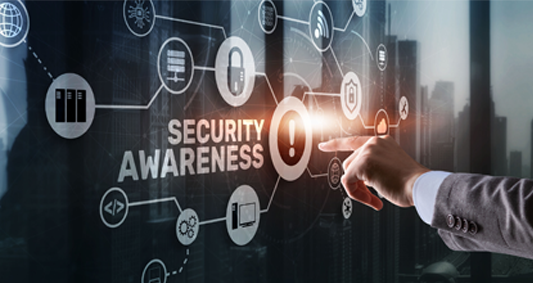
In the digital age, the threats are many, and the risks are high. But did you know the most robust defense against cybersecurity threats isn’t just technology? It’s the people using that technology.
Building a security-aware culture means every team member is informed, vigilant, and proactive about digital threats.
In this blog post, we’ll explore the five areas you need to focus on to create a security-aware culture within your organization.
1. Leadership and Commitment
The first area you need to focus on is leadership and commitment. Security awareness starts from the top, and you need to have the support and involvement of your senior management and board of directors. Leadership should be the first to adopt and model security behaviors, making it evident that security is not just an IT issue but a company-wide priority. They need to set the tone, vision, and strategy for security awareness and allocate the necessary resources and budget for it. They also need to communicate the importance and value of security awareness to all levels of the organization and model the desired behaviors and attitudes.
2. Policies and Procedures
The second area you need to focus on is policies and procedures. Ensure policies are user-friendly and accessible. Overly complex policies can lead to non-compliance due to confusion. You need to have clear, comprehensive, and updated policies and procedures that define the roles, responsibilities, and expectations of your employees, contractors, and partners regarding security. These policies and procedures should cover themes such as access control, data classification, incident response, backup and recovery, encryption, password management, remote work, social media, etc. You also need to ensure that these policies and procedures are communicated, enforced, and reviewed regularly.
3. Education and Training
The third area you need to focus on is education and training. Use real-world scenarios or simulations in your training to make it relatable. The more realistic the training, the better employees can understand the consequences and the importance of their actions. You need to provide regular, relevant, and engaging education and training programs for your employees, contractors, and partners on security awareness topics. These programs should be tailored to the needs, roles, and learning styles of your audience and include a blend of formats such as online courses, webinars, videos, quizzes, games, simulations, etc. You also need to measure the effectiveness of these programs by using metrics such as completion rates, test scores, feedback surveys, etc.
4. Communication and Engagement
The fourth area you need to focus on is communication and engagement. Solicit feedback and, importantly, act on that feedback. This shows employees that their input is valued and ensures the security awareness program remains effective and relevant. You need to create a continuous dialogue with your employees, contractors, and partners on security awareness topics and keep them informed, motivated, and involved. You can use various channels, such as newsletters, blogs, podcasts, posters, flyers, events, contests, rewards, etc., to communicate and engage with your audience. You also need to solicit feedback from them on how to improve your security awareness programs and initiatives.
5. Monitoring and Evaluation
The fifth area you need to focus on is monitoring and evaluation. It’s not enough just to monitor; the key is to adapt. Use your evaluations to refine and enhance the program, ensuring it remains ahead of emerging threats. You can use various tools, such as audits, assessments, surveys, interviews, focus groups, etc., to collect data and insights on your security awareness performance. You also need to analyze this data and use it to identify gaps, strengths, weaknesses, opportunities, and threats for your security awareness efforts.
Conclusion
Creating a security-aware culture within your company is not a one-time project or a checkbox exercise. It is an ongoing process that requires constant attention, investment, and improvement. By focusing on these five areas: leadership and commitment, policies and procedures, education and training, communication and engagement, and monitoring and evaluation, you can create a security-aware culture within your organization that will help you protect your data and systems from cyber threats.
Need help in building that culture and providing you with the systems needed to succeed? We’re here to help! Click here to contact the Mentis Group to schedule a free discovery call with one of our cybersecurity experts.
